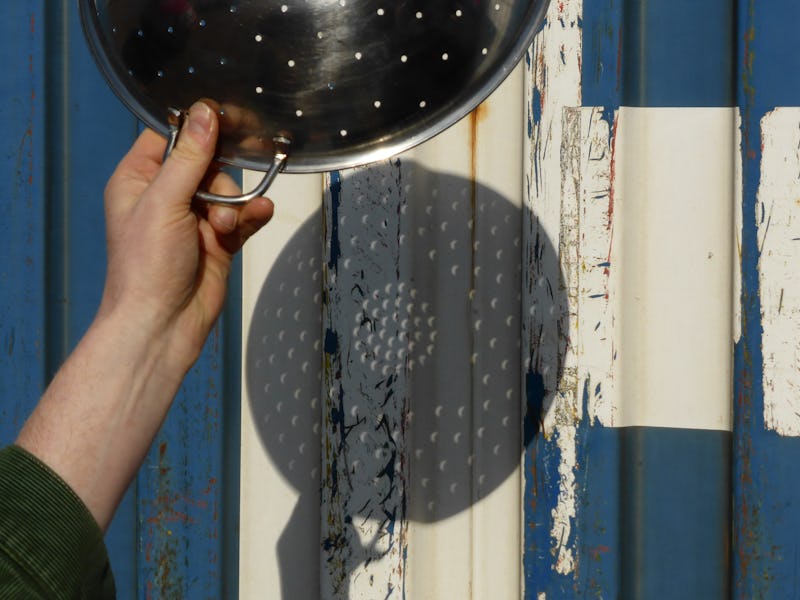Colanders and Welding Masks? DIY Ways to View the Total Solar Eclipse
As well as a few things you shouldn't try.

Looking directly at the sun is incredibly unsafe, and the total solar eclipse on Monday will not be an exception to the rule. Just because the moon will cover the sun’s rays for a short period — and even then, this will only fully occur within the geographical stretch known as the path of totality — it’s no excuse to renege on the eyewear. Emphasis on the word eyewear.
There are a lot of life hacks floating around on the internet right now that talk about DIY viewing instruments, but if you’re planning on trying to view the eclipse directly, there are only a few surefire options.
Eclipse glasses — which in some cases look a lot like 3D movie shades — are available for purchase (or for free!) from NASA eclipse-viewing locations and a number of U.S. libraries. The American Astrological Society has also compiled the ultimate list that documents everywhere you can find safe eclipse glasses and viewers, online and in stores. An increasingly popular option is a welder’s helmet (sometimes referred to as a welder’s mask) with a shade No. 12 or higher. The high shade number makes for a higher price, but any lower than that and the shading won’t protect you from the scary vision fuzziness that can result from staring at an eclipse — even for a few seconds.
And, no, regular sunglasses will not do the trick. Even with the moon almost directly over the sun, your sunglasses can still let in thousands of times too much sunlight for it to be safe.
There are also a few household items that can be used on the big day. Colanders can make a great pinhole projector; just hold one between a wall and the eclipse, and the tiny holes will give you many mini eclipses to stare at safely. But please don’t try to hold up a colander and look at the sun.
If you are into weird crafts, you can also make a pinhole projector using a cereal box.
For more on pinhole viewers, read this.
With reporting from Peter Hess.